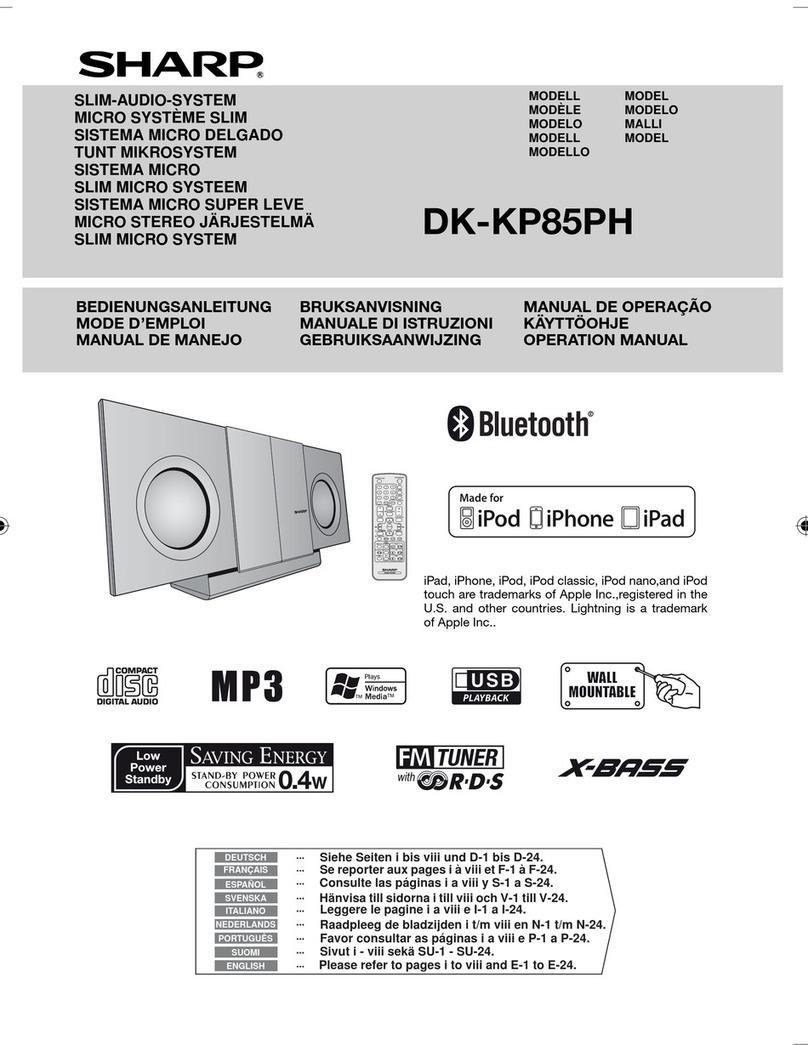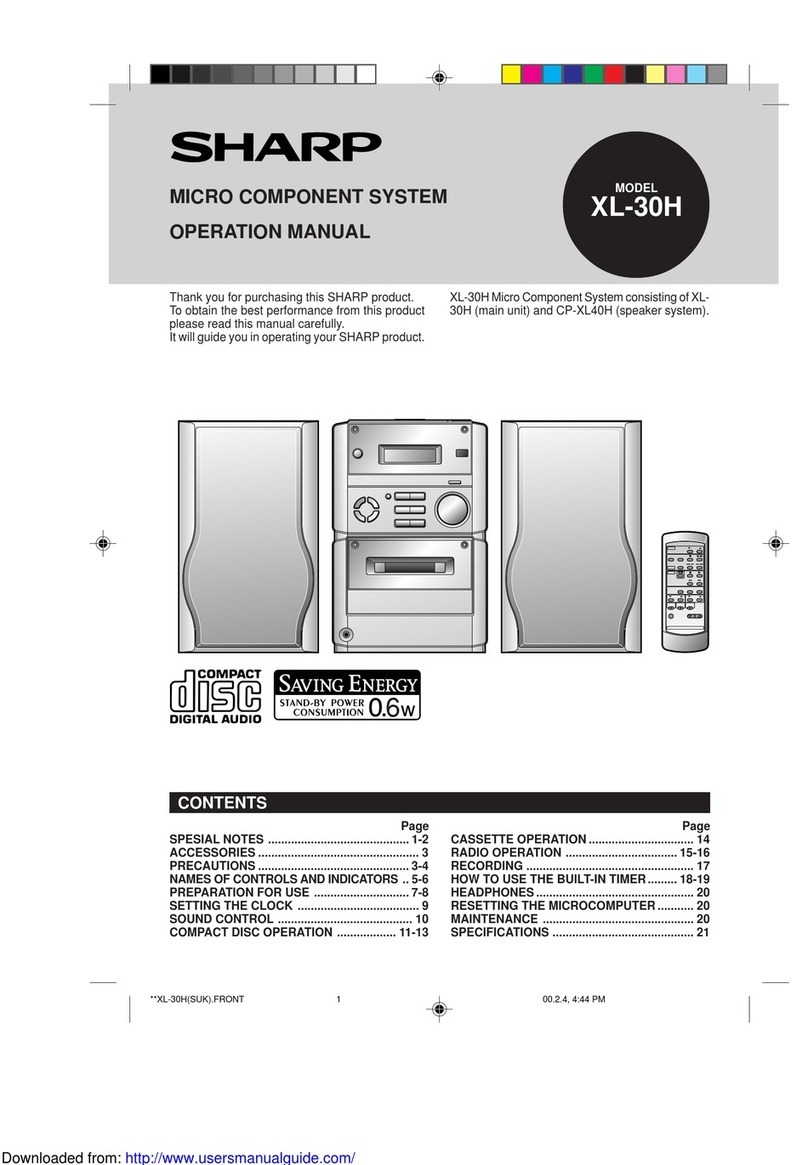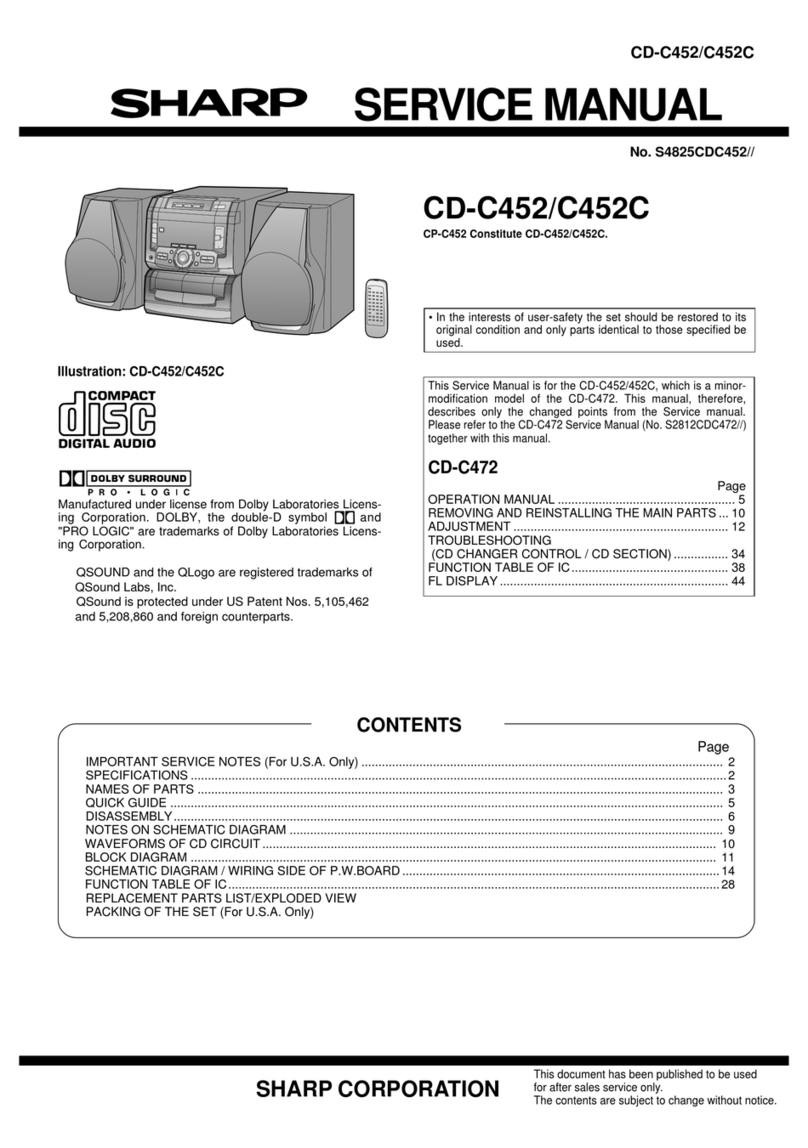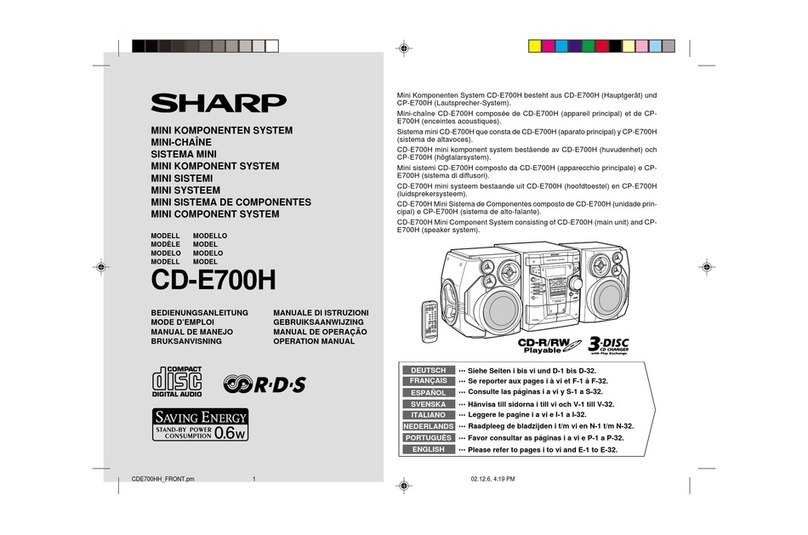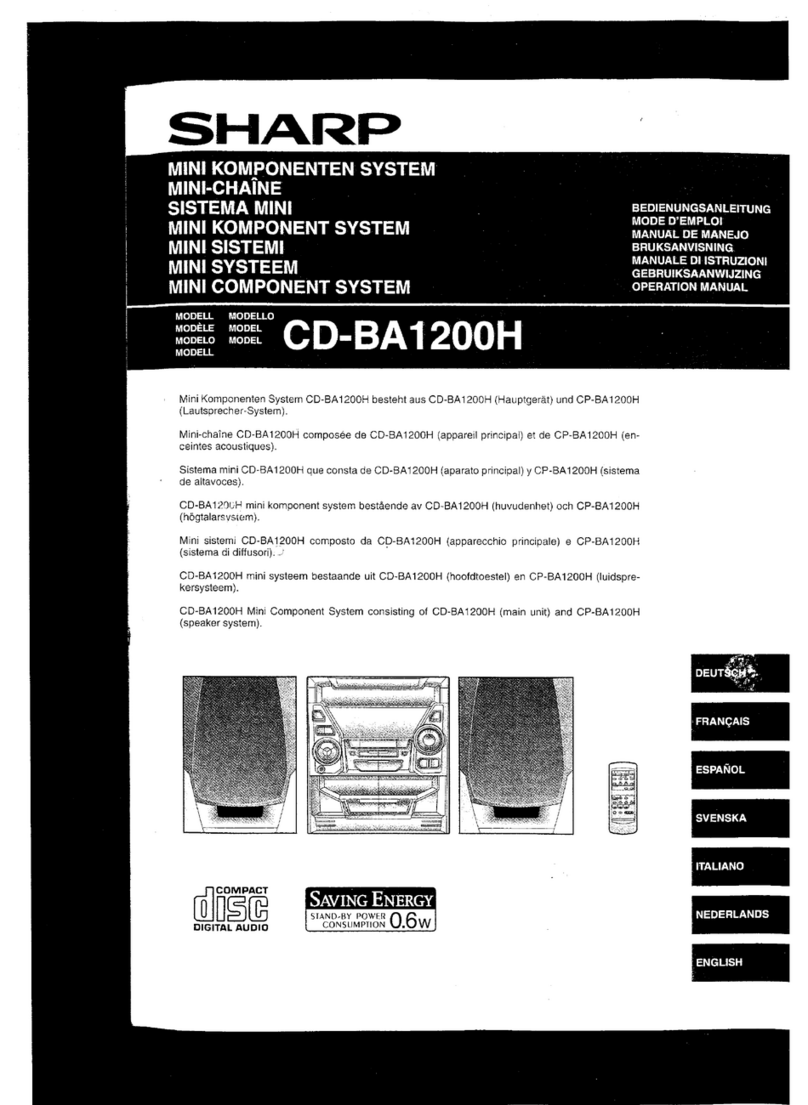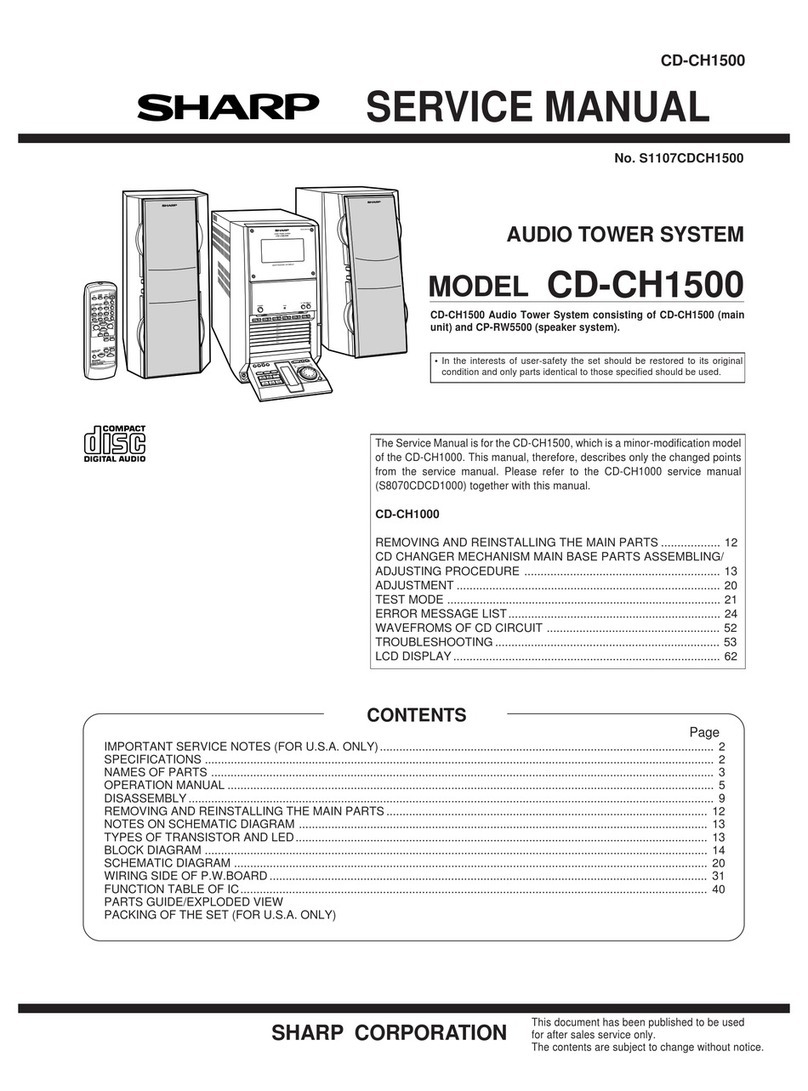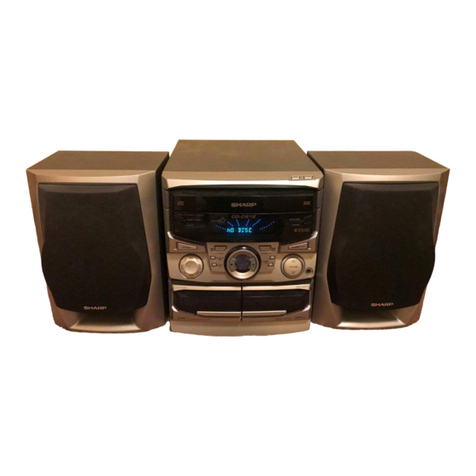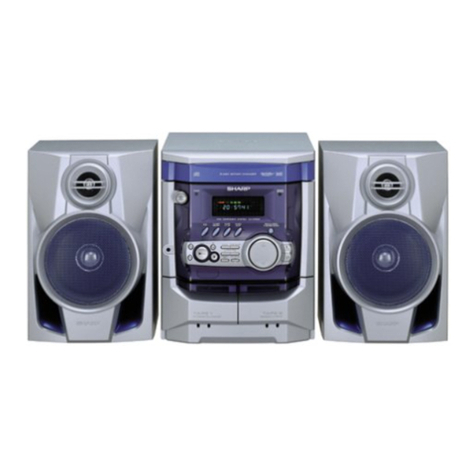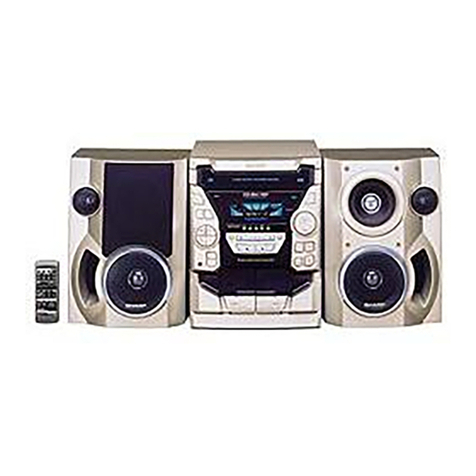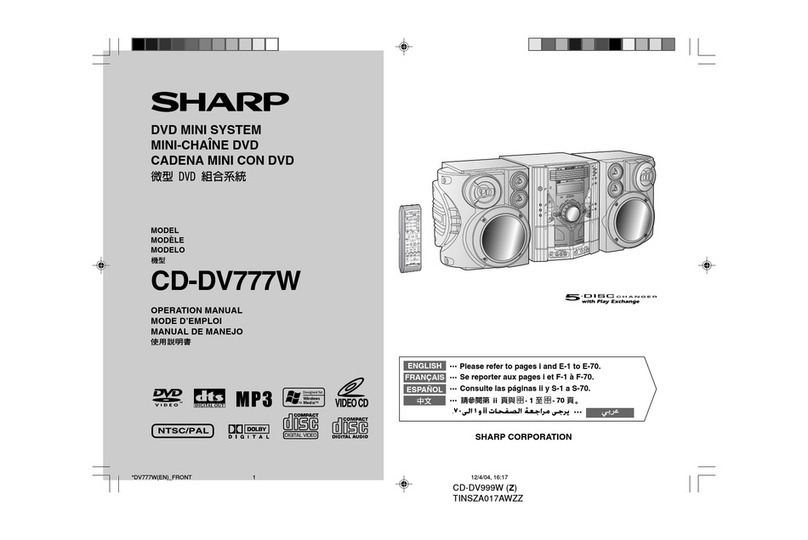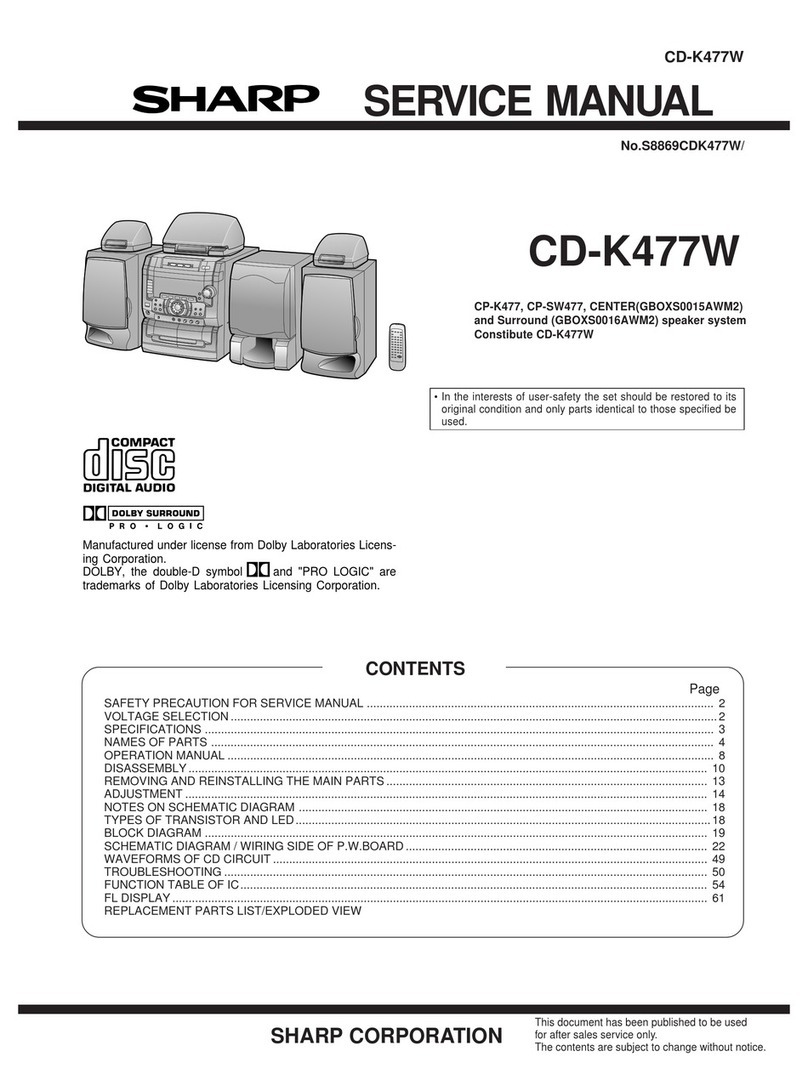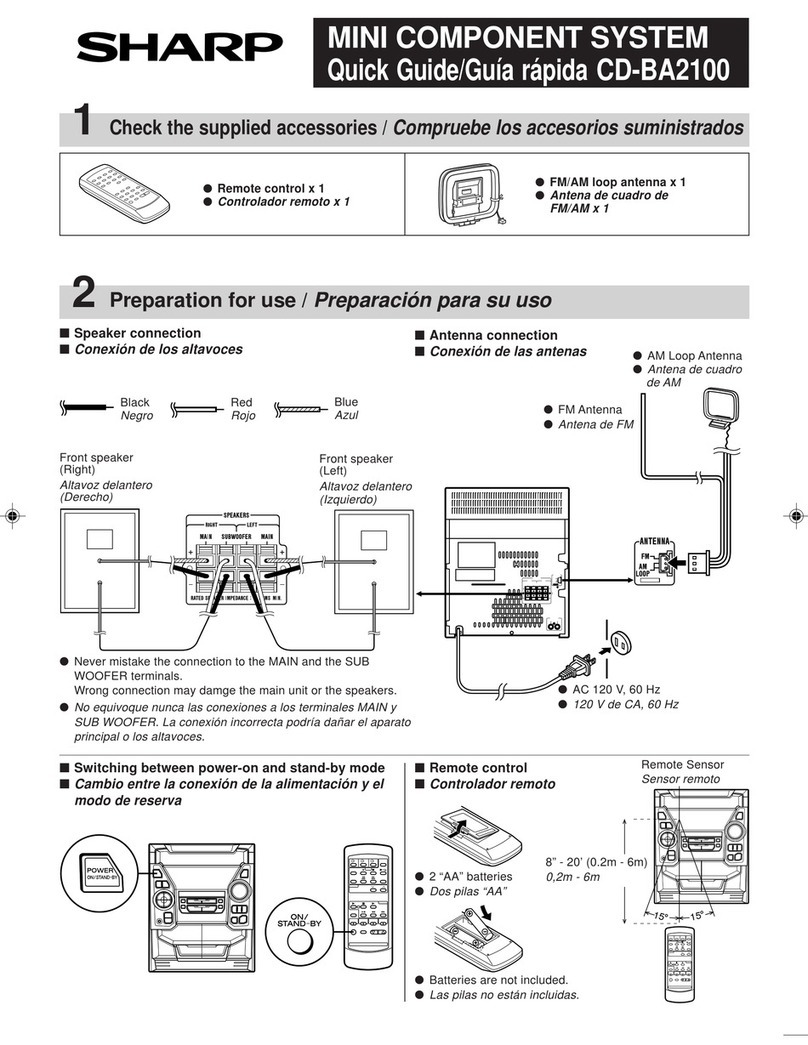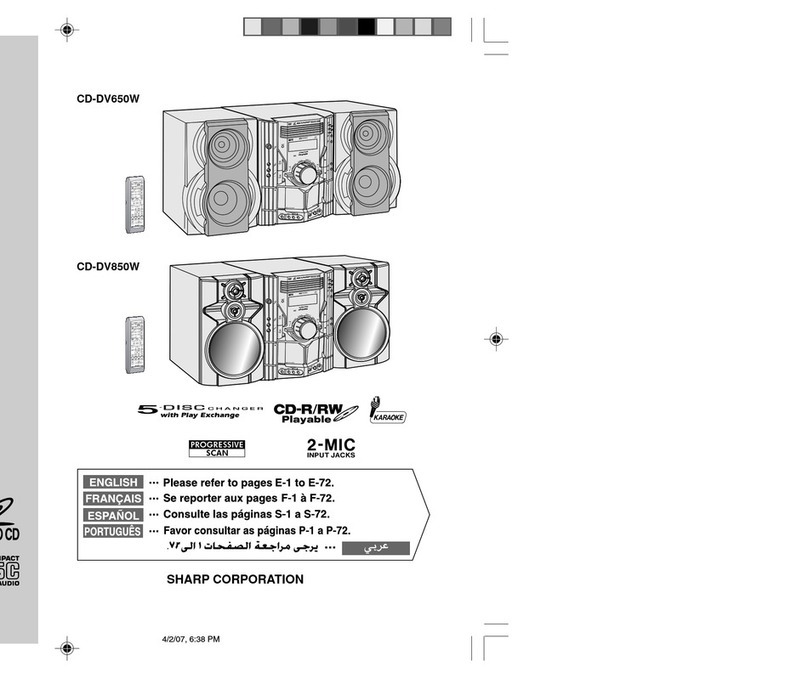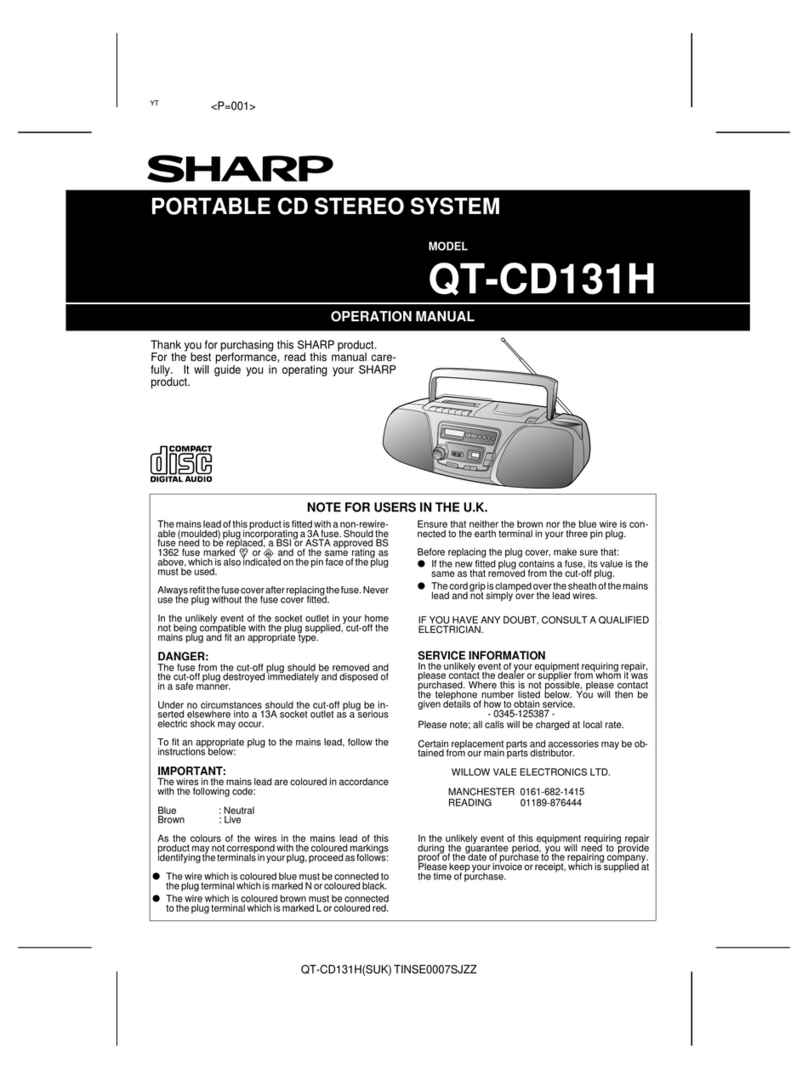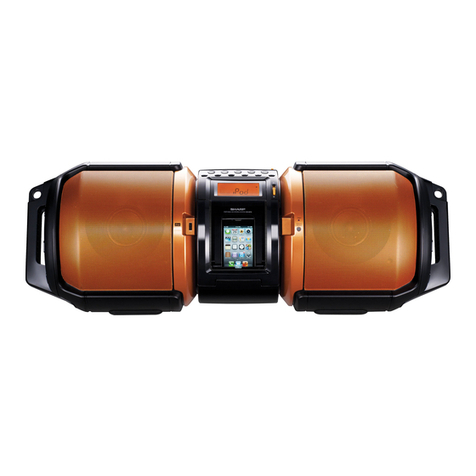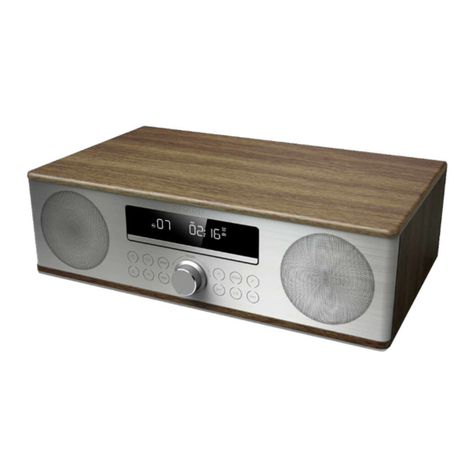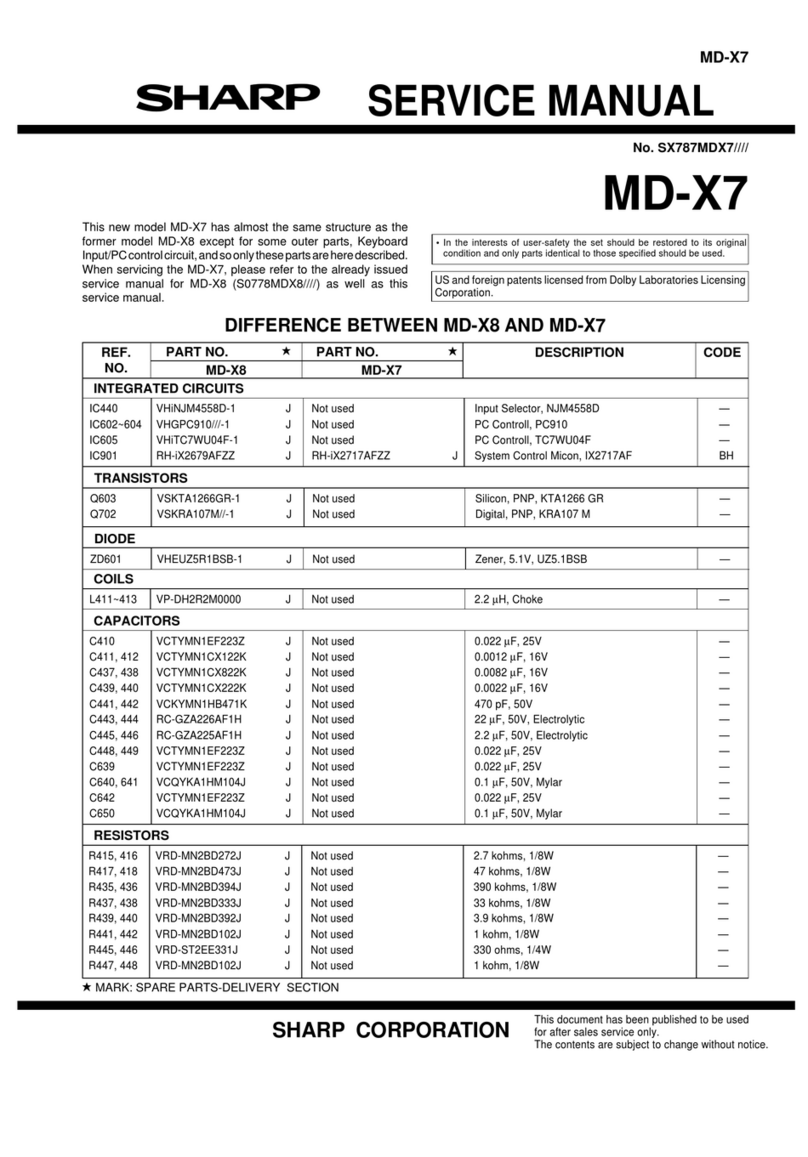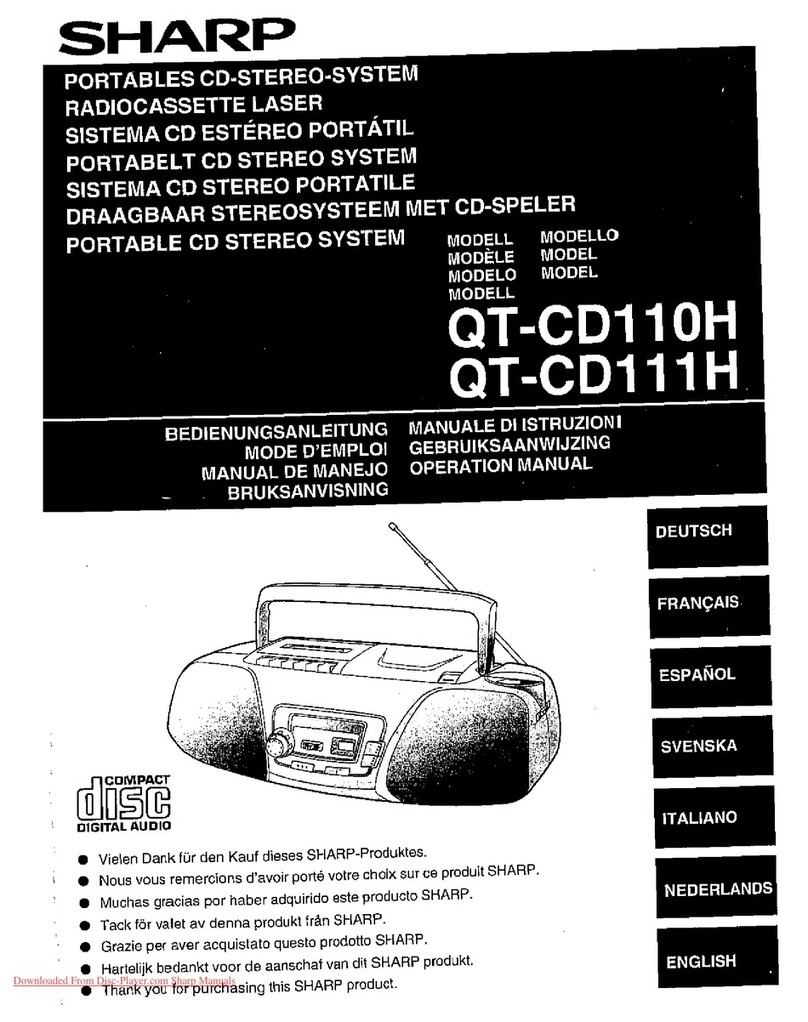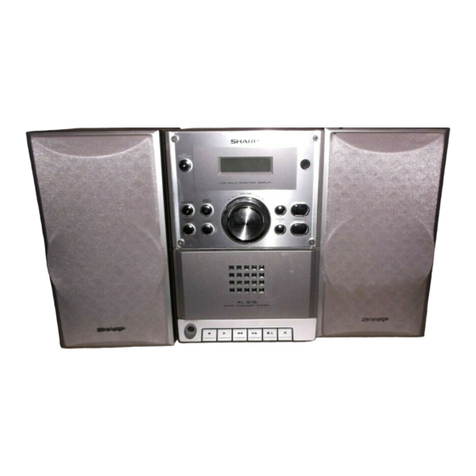
CD-C5H,CP-C5H
– 8 –
Caution on Disassembly
Follow the below-mentioned notes when disassembling
the unit and reassembling it, to keep it safe and ensure
excellent performance:
1. Take cassette tape and compact disc out of the unit.
2. Be sure to remove the power supply plug from the wall
outlet before starting to disassemble the unit.
3.Takeoffnylonbandsorwireholderswheretheyneedbe
removed when disassembling the unit. After servicing
the unit, be sure to rearrange the leads where they were
before disassembling.
4. Take suff cient care on static electricity of integrated
circuits and other circuits when servicing.
DISASSEMBLY
Figure 8-2
Figure 8-1
CD-C5H CP-C5H
CD-C5H
1 Top Cabinet 1. Screw ................. (A1) x4 8-1
2 Side Panel 1. Screw ................. (B1) x6 8-1
(Left/Right) 2. Screw ................ (B2) x4
3
CD Changer Block
1. Flat Cable ...........(C1) x1 8-2
2. Screw .................(C2) x2
3. Screw .................(C3) x2
4 Pro Logic PWB 1. Screw .................(D1) x2 9-1
5 Tuner PWB 1. Screw ................. (E1) x9 9-1
2. Screw ................. (E2) x1
3. Screw ................. (E3) x4
6 Main PWB 1. Socket ................ (F1) x3 9-1
2. Flat Cable ........... (F2) x2
3. Flat Wire ............. (F3) x2
4. Screw ................. (F4) x2
5. Screw ................. (F5) x2
7 Front Panel 1. Flat Wire.............(G1) x2 9-1
2. Screw .................(G2) x1
3. Screw .................(G3) x2
8 Display PWB 1. Knob ...................(H1) x2 9-2
2. Nut ..................... (H2) x1
3. Screw .............. (H3) x12
9 CD Switch PWB 1. Screw ................. (J1) x3 9-2
10
Headphones PWB
1. Screw ................ (K1) x1 9-2
11 Tape Mechanism 1. Open the cassette holder 9-2
2. Screw ................. (L1) x6
12 Amp. PWB 1. Socket ............... (M1) x1 9-3
2. Screw ................ (M2) x2
3. Screw ................ (M3) x2
13 Power Amp. PWB 1. Socket ................(N1) x1 9-4
2. Screw .................(N2) x4
3. Screw .................(N3) x2
14 Power Supply PWB 1. Screw ................ (P1) x1 9-4
2. Screw ................ (P2) x4
15 CD Digital PWB 1. Screw ................ (Q1) x1 9-5
16 CD Changer Holder 1. Screw .................(R1) x3 9-5
17 CD Servo PWB 1. Socket ................ (S1) x6 9-6
(Note) 2. Screw ................. (S2) x3
18 Tray Switch PWB 1. Screw ................ (T1) x1 9-6
REMOVAL PROCEDURESTEP FIGURE STEP REMOVAL PROCEDURE FIGURE
1 Front Speaker 1. Screw ................... (A1) x2 10-2
2. Screw ................... (A2) x2 10-3
3. Screw ................... (A3) x4
2 Center Speaker 1. Net ....................... (B1) x1 10-4
2. Screw ................... (B2) x2
3. Screw ................... (B3) x6
4. Screw ................... (B4) x3 10-5
3 Surround Speaker 1. Net ....................... (C1) x1 10-6
2. Screw ................... (C2) x4
3. Screw ................... (C3) x2
4. Screw ................... (C4) x2
Note : After removing the connector for the optical pickup
fromtheconnectorwraptheconductive aluminiumfoil
around the front end of connector so as to protect the
optical pickup from electrostatic damage.
CD-C5H
19 CD Mechanism 1. Screw ....................(U1) x2 10-1
2. Top Bord ...............(U2) x1
3. Disc Holder ...........(U3) x1
4. Disc Tray...............(U4) x3
5. Screw ....................(U5) x1
6. Mechanism Holder ...........
Guide .................... (U6) x1
7. Screw ....................(U7) x2
8. Mechanism Holder ...........
Bracket..................(U8) x1
9. Screw ....................(U9) x4
10.
Mechanism Holder
(U10) x1
REMOVAL PROCEDURESTEP FIGURE
(A1)x2
Ø3x12mm Top Cabinet
Front Panel
(B1)x3
Ø3x12mm
(B2)x4
Ø3x10mm
Rear Panel
(A1)x2
Ø3x12mm
(B1)x3
Ø3x12mm
Side Panel
(Left)
Side Panel
(Right)
(C3)x2
Ø3x12mm
(C2)x2
Ø3x10mm
Rear Panel
CD Changer Block
CD Changer
Holder
Front Panel
CD Servo
PWB
(C1)x1
Main PWB
